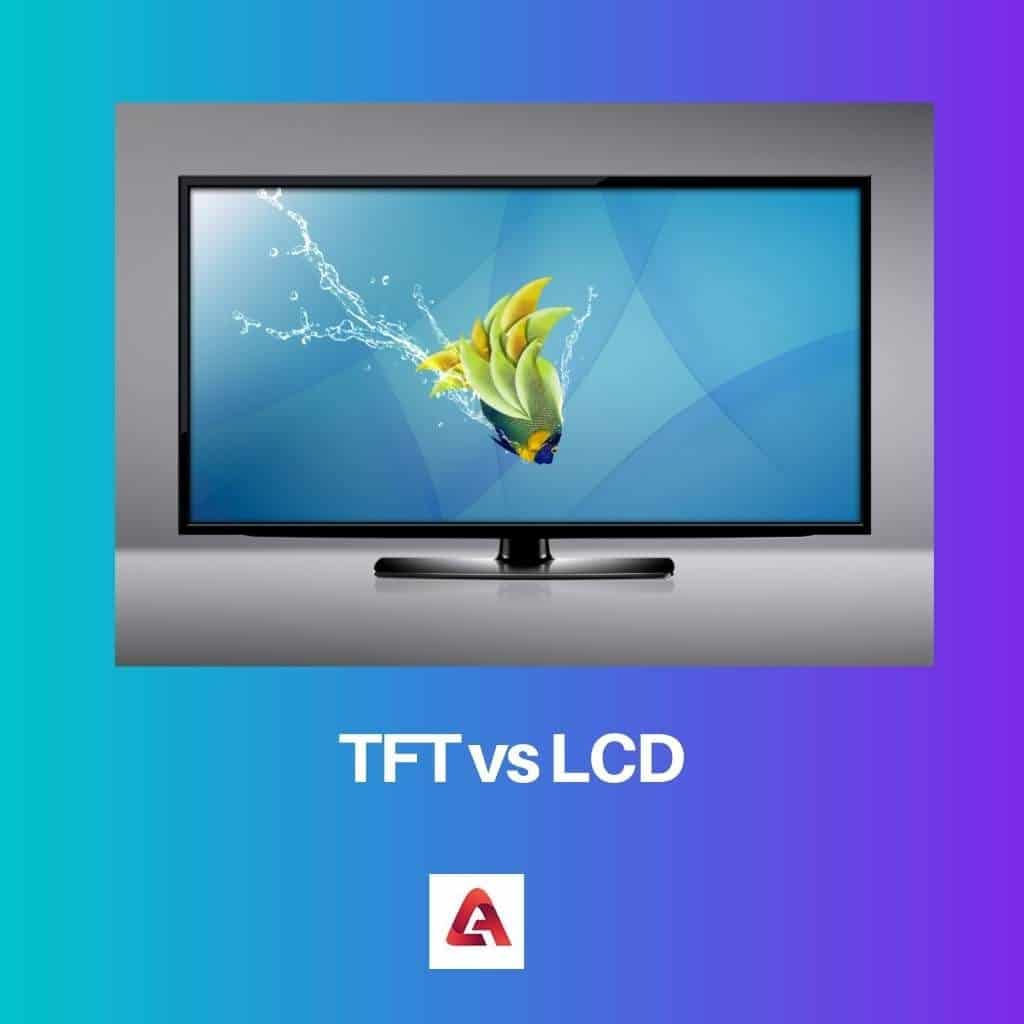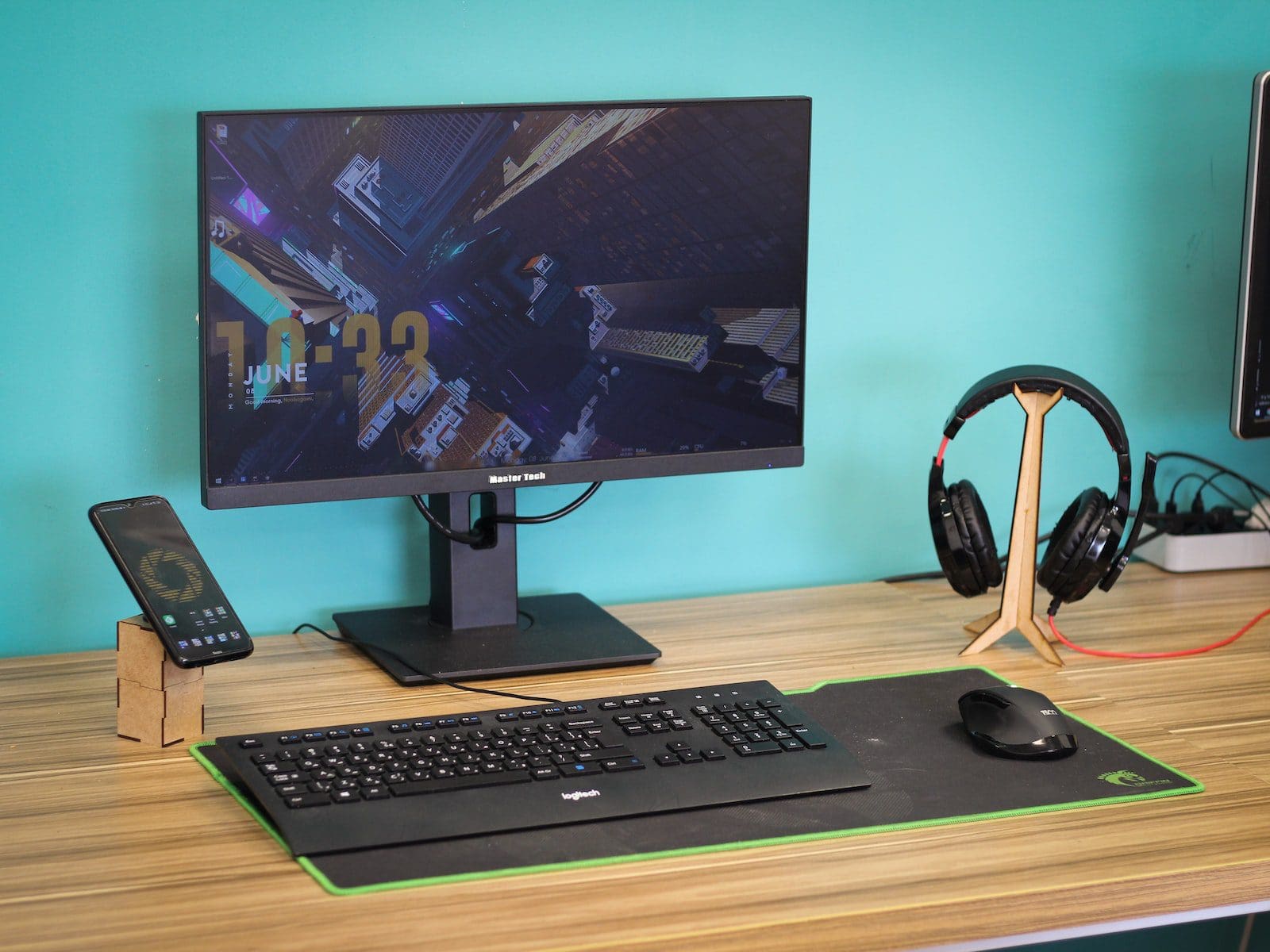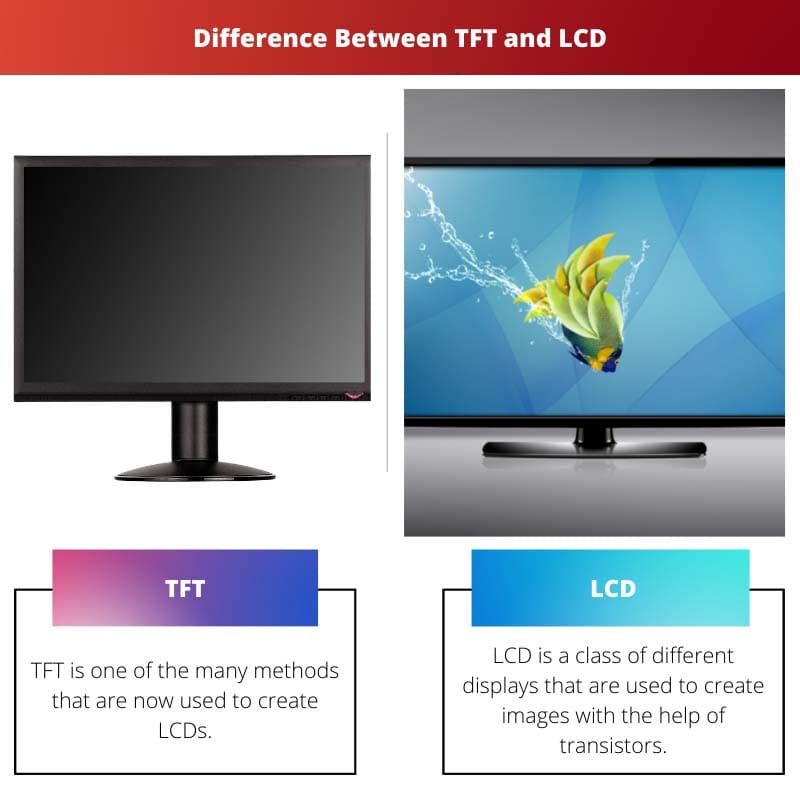LCD stands for liquid crystal displays, which were basically created to provide an alternative to big and bulky CRT display screens. LCDs were efficient when it came to energy and were very thin and light too.
The best part about TFT displays is that the elements of TFT are deposited directly to the glass substrate rather than the traditional solution of producing silicon transistors.
Key Takeaways
- TFT screens provide better image quality, color reproduction, and contrast than standard LCD screens, improving the visual experience.
- TFT technology consumes more power than LCD, decreasing energy efficiency and battery life in portable devices.
- TFT displays offer wider viewing angles and faster response times than LCDs, reducing ghosting and blurring in fast-paced multimedia content.
TFT vs LCD
LCD (Liquid Crystal Display) is designed as an alternative to large screens like CRT. LCDs are thin, light in weight and easy to use. It requires more charge. TFT (Thin-Film Transistor) is a type of LCD. They do not require a large amount of charge. They produce high-quality displays.

TFT is abbreviated for the thin-film transistor. It is basically used for flat planes in order to get high-quality liquid crystal displays, that are, the LCDs.
LCD stands for liquid crystal displays, which were basically created to provide an alternative to big and bulky CRT display screens. LCDs were efficient when it came to energy and were very thin and light too.
Comparison Table
| Parameters of comparison | TFT | LCD |
|---|---|---|
| What is it? | TFT is one of the many methods that are now used to create LCDs. | LCD is a class of different displays that are used to create images with the help of transistors. |
| Process | TFT displays the elements of TFT are deposited directly to the glass substrate rather than the traditional solution of producing silicon transistors. | LCD does not have such a process. |
| Displays | The TFT-produced displays are much better and are not prone to any crosstalk. | Displays made with LCDs are prone to crosstalk and do not have good quality. |
| Amount of charge | TFT requires a very less amount of charge to get activated. | LCD being traditional, require much more amount of charge. |
| Production | All the LCDs produced are made with the TFT process. | The previous methods are not used by LCDs for their production now. |
What is TFT?
TFT is abbreviated for the thin-film transistor. It is basically used for flat planes in order to get high-quality liquid crystal displays that are LCDs.
The best part about TFT displays is that the elements of TFT are deposited directly to the glass substrate rather than the traditional solution of producing silicon transistors.

What is LCD?
LCD stands for liquid crystal displays, which were basically created to provide an alternative to big and bulky CRT display screens. LCDs were efficient when it came to energy and were very thin and light too.
LEDs, though, have a very common and mostly used set of systems as it literally is used anywhere, like in smartphones, computers, laptops, and other instrumental places.

Main Differences Between TFT and LCD
- TFT requires a very less amount of charge to get activated, but LCD being traditional, requires a much more amount of charge.
- All the LCDs produced are made with the TFT process, but LCDs do not currently use the previous methods for their production.




